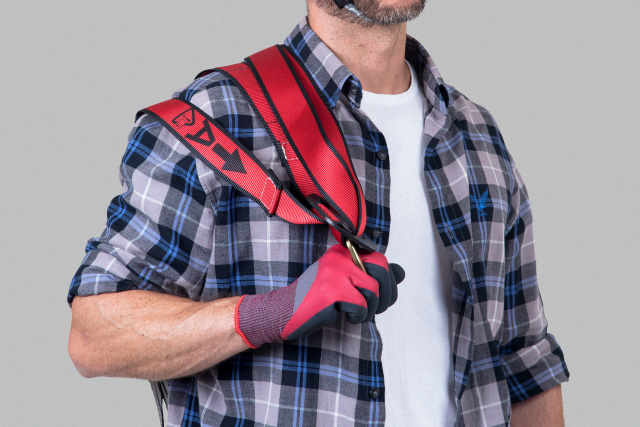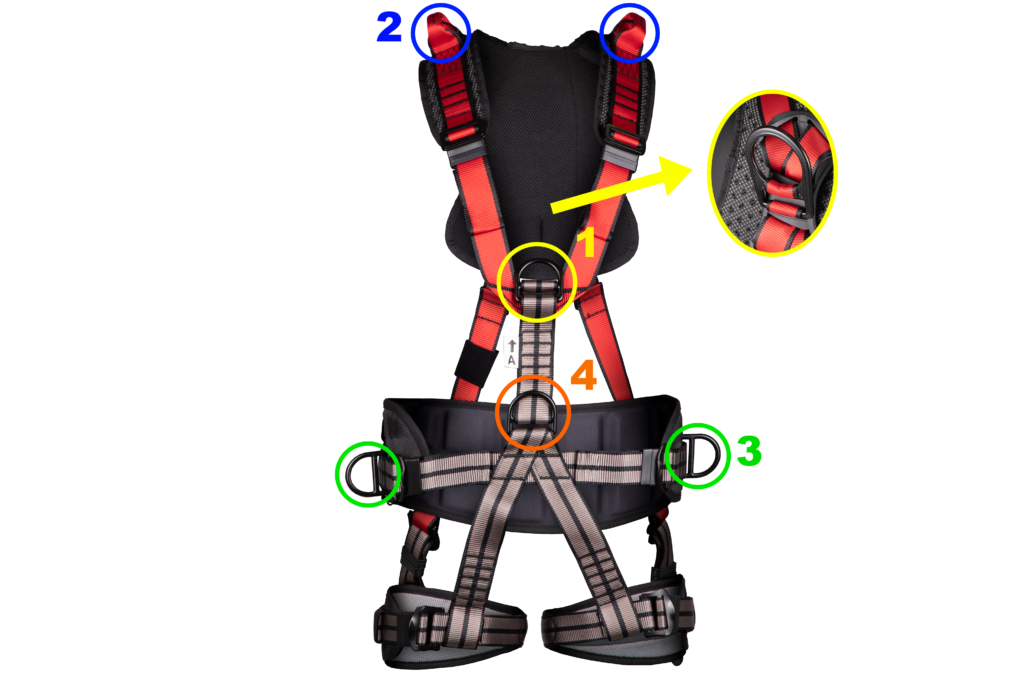Security belt connection points

The Paratrooper Type Seat Belt has its coupling points to keep the employee always connected during their Activity in Height. Depending on the variation of work found, there is a specific point at which it will play the role of receiving a certain impact and distributing the weight between the belt and the employee's body, the planning of the connection point to be used should be very well considered according to its activity, due to this we will clarify what are the main assignments of the connection points of the safety belts type paratrooper:  1Fall retention: The dorsal or frontal connection point that are located in the rear and pectoral region of the safety belt, respectively, allow the distribution of the fall impact on the belt tapes and also dissipated on the worker's body. That's why they're centered at the top of the belt, so that the distribution of that impact is effective. They are identified with the letter A, or when they have 2 front ends, they must be identified with the letter A and the number 2, symbolizing "A/2", creating a single coupling element. Every safety belt has the dorsal connection point.
1Fall retention: The dorsal or frontal connection point that are located in the rear and pectoral region of the safety belt, respectively, allow the distribution of the fall impact on the belt tapes and also dissipated on the worker's body. That's why they're centered at the top of the belt, so that the distribution of that impact is effective. They are identified with the letter A, or when they have 2 front ends, they must be identified with the letter A and the number 2, symbolizing "A/2", creating a single coupling element. Every safety belt has the dorsal connection point.
2 Suspension:
The connection point located in the shoulder region of the safety belt is intended in most cases for activities in Confined Spaces. They allow the suspension/rescue of the employee in a way that the body will be upright, even when it is unconscious, allowing the ascent or descent in narrow places. This connection point cannot be used as fall retention and/or hold. 3 Positioning: This connection point is widely used by the telecommunications sector and the electricity sector. It has two ends, one on each side of the waist, for the use of the positioning talabart, allowing the employee to work in a stable and comfortable position, while his hands are free in performing tasks. It is comfortable only to support the lumbar region of the body. 4 Drive: Connection point widely used in rope access, essential connection point for industrial climber, which performs a more technical movement, performing difficult and tactical accesses, through brakes, lifts and / or lifts. It is a connection point that requires a technical knowledge of who will perform its connection, because as it is a hitch that is not considered as fall retention, but for movement, the employee who will perform the access must have proficiency in the operation.